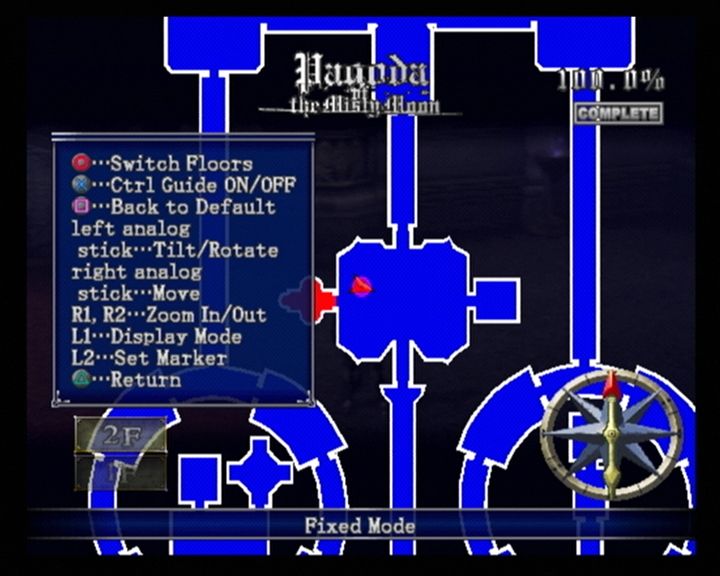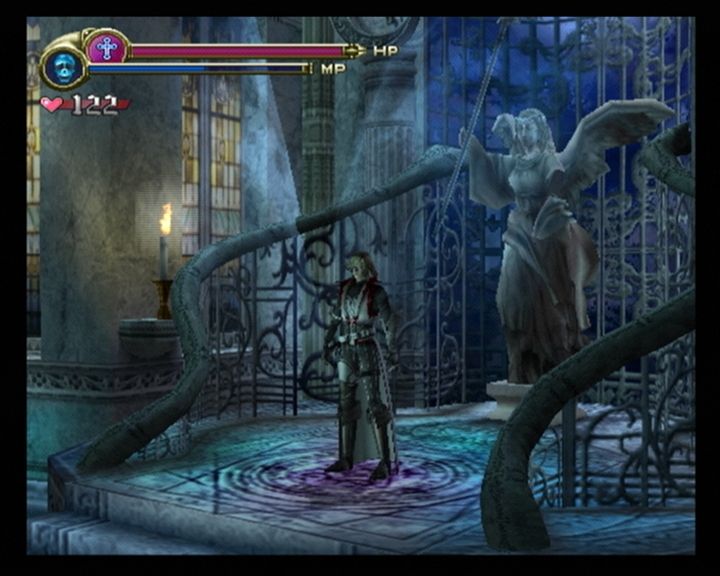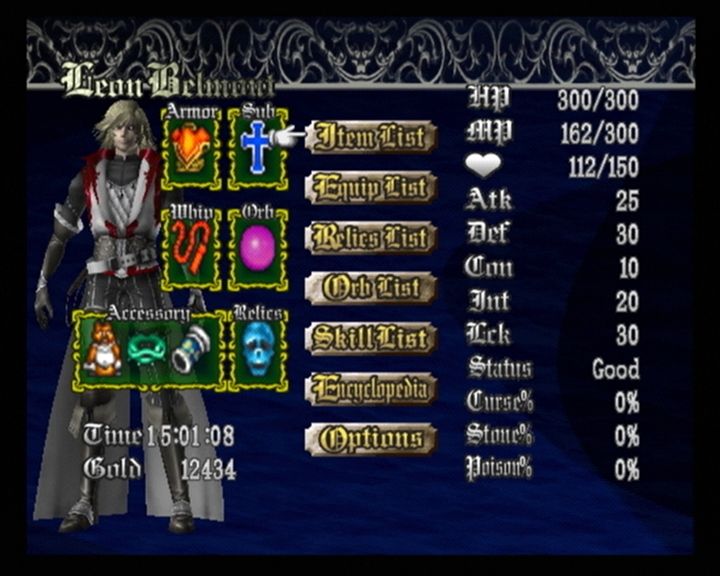Retro Replay Review
Gameplay
Castlevania: Lament of Innocence reinvigorates the classic hack-and-slash formula with a layer of strategic depth that challenges both brand-new players and veterans alike. You control Leon Belmont in real time as he navigates sprawling castle halls, dispatching monsters with his trusty Whip of Alchemy. Unlike previous entries in the series, you can’t simply button-mash your way to victory; each new whip upgrade and ability must be earned by mastering the moves that came before. This cascading progression system gives every combat encounter weight and makes every relic discovery feel like a genuine milestone.
In addition to Leon’s primary attacks, the game implements an orb system that enhances your offensive and defensive capabilities. Collecting elemental orbs allows you to unleash powerful special attacks, from fire-based area-of-effect strikes to ice barriers that freeze foes in place. Timing these super moves is critical, especially during boss fights where relentless enemy patterns can overwhelm you if you rely solely on your whip. The sense of reward when pulling off a perfectly timed orb attack is one of the game’s most satisfying moments.
Exploration in Lament of Innocence feels like a puzzle in its own right. Scattered throughout the castle are relics that unlock new pathways—double jumps, wall runs, even a temporary shield—that turn what might have been a linear corridor crawl into an intricate labyrinth. As you uncover secret rooms and hidden bosses, you’ll find yourself consulting every corner of the map. This blend of combat, platforming, and environmental puzzle-solving creates a balanced experience that keeps the pacing tight without sacrificing depth.
Graphics
For a PlayStation 2 title released in 2003, Castlevania: Lament of Innocence delivers impressive visuals that hold up remarkably well. The game’s Gothic architecture is richly detailed: towering stained-glass windows, moss-covered stone walls, and grandiose halls evoke the foreboding atmosphere of Dracula’s domain. Dynamic lighting casts eerie shadows down dim corridors, making every flickering torch and cascading beam of moonlight feel evocative of classic horror imagery.
Character models are fluidly animated, with Leon’s movements—dashing, jumping, and whipping—rendered smoothly at a solid frame rate. Enemy designs range from skeletal knights to grotesque gargoyles, each with distinct attack animations that telegraph the moves you’ll need to dodge or counter. Bosses, in particular, shine with larger-than-life presence: their size, dramatic entrance animations, and elaborate attack patterns feel cinematic on a small screen.
While texture resolution may seem dated by modern standards, the game’s strong art direction compensates for any technical shortcomings. Color palettes shift subtly between areas, from blood-red chapels to cold, moonlit courtyards, reinforcing the tone of each zone. Occasional fog effects and particle-based magic spells add layers of polish, ensuring that Lament of Innocence remains visually engaging even today.
Story
As the series’ inaugural prequel, Lament of Innocence fills in the earliest chapter of the Belmont family’s storied struggle against Dracula. You play Leon Belmont, a former baron whose beloved fiancée, Sara, is kidnapped and taken to a monstrous castle seemingly alive with dark power. The premise is simple but effective: a personal quest born from love and desperation, set against the backdrop of supernatural horror.
Denied official backing by the Church due to ongoing Crusades, Leon forsakes his title and ventures unarmed into the night. He encounters Rinaldo, a wise alchemist-turned-vampire hunter, who provides Leon with the titular Whip of Alchemy and valuable guidance. Their relationship sets a mentor-and-apprentice tone, enriching the narrative with a human touch that offsets the game’s darker supernatural elements. Along the way, you uncover fragments of Dracula’s origin, the first hints of the curse that will plague the Belmont bloodline for centuries.
The pacing of the storyline is interwoven with exploration, with well-placed cutscenes offering glimpses into character motivations and the castle’s lore. While dialogue delivery may feel a bit stilted by today’s standards, the overarching tale of love, sacrifice, and ancestral duty resonates strongly. By the time the final confrontation arrives, you understand not only Leon’s personal stakes but also the broader mythos that defines the entire Castlevania franchise.
Overall Experience
Castlevania: Lament of Innocence successfully marries memorable combat, atmospheric design, and a compelling origin story into a cohesive package. The game’s measured difficulty curve—punishing enough to feel worthwhile but fair enough to prevent frustration—caters to a broad range of players. Whether you’re hunting down all five hidden bosses for rare rewards or simply following the main path to rescue Sara, the sense of accomplishment never wanes.
Replay value is high thanks to multiple difficulty settings, hidden collectibles, and branching exploration routes. Finding every orb, relic, and secret chamber can easily double your playtime, and the thrill of uncovering a brand-new area never grows old. Even in today’s era of open-world games, Lament of Innocence’s focused castle design feels like a masterclass in level layout.
Ultimately, this game stands out as a must-play entry in the Castlevania series, particularly for fans eager to trace the Belmont-Dracula saga to its roots. Its balance of strategic combat, rewarding exploration, and gothic storytelling offers an experience that is as engaging now as it was on day one of its release. For anyone seeking a classic action-adventure with enduring charm, Lament of Innocence remains a shining example.
 Retro Replay Retro Replay gaming reviews, news, emulation, geek stuff and more!
Retro Replay Retro Replay gaming reviews, news, emulation, geek stuff and more!









Reviews
There are no reviews yet.